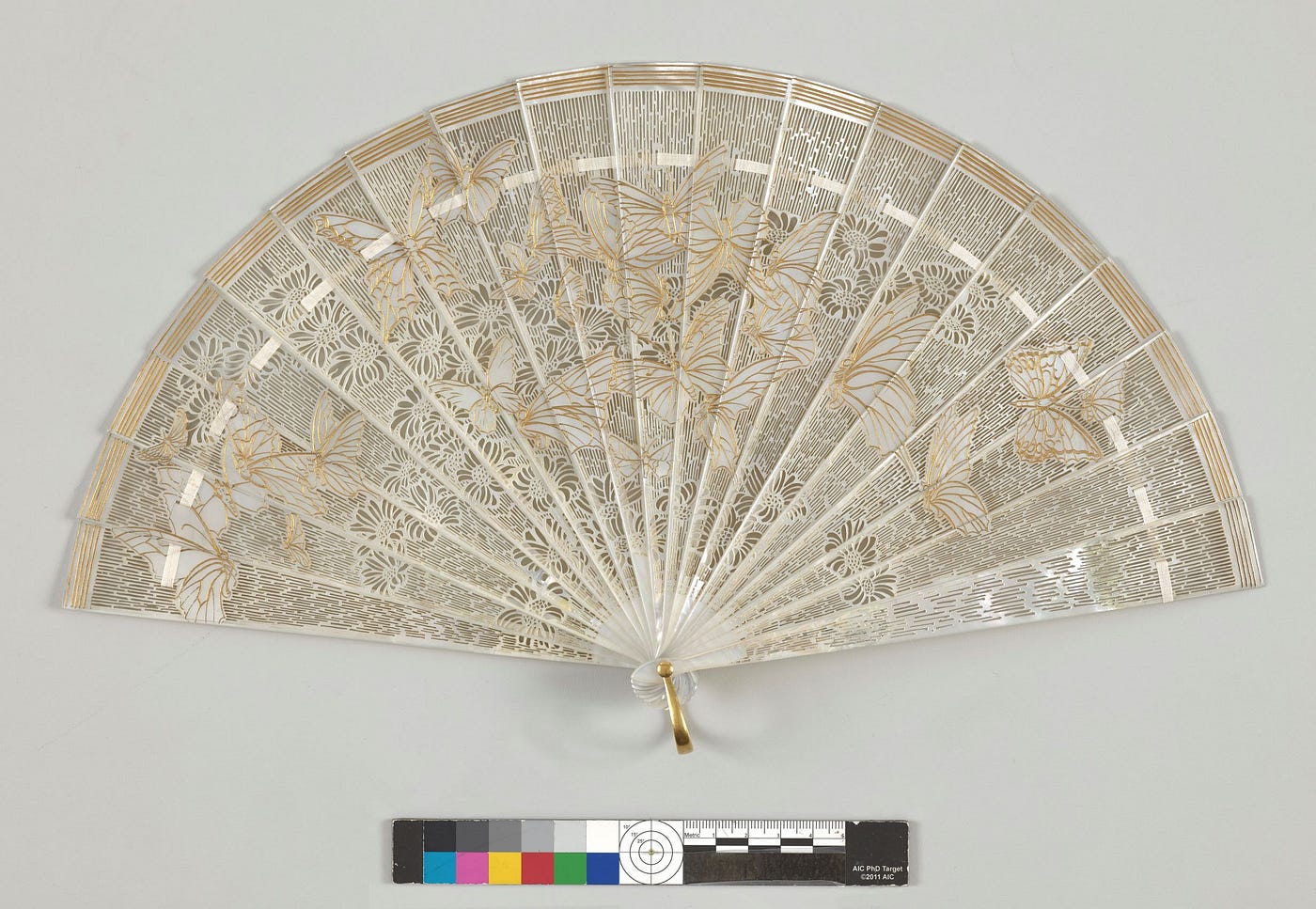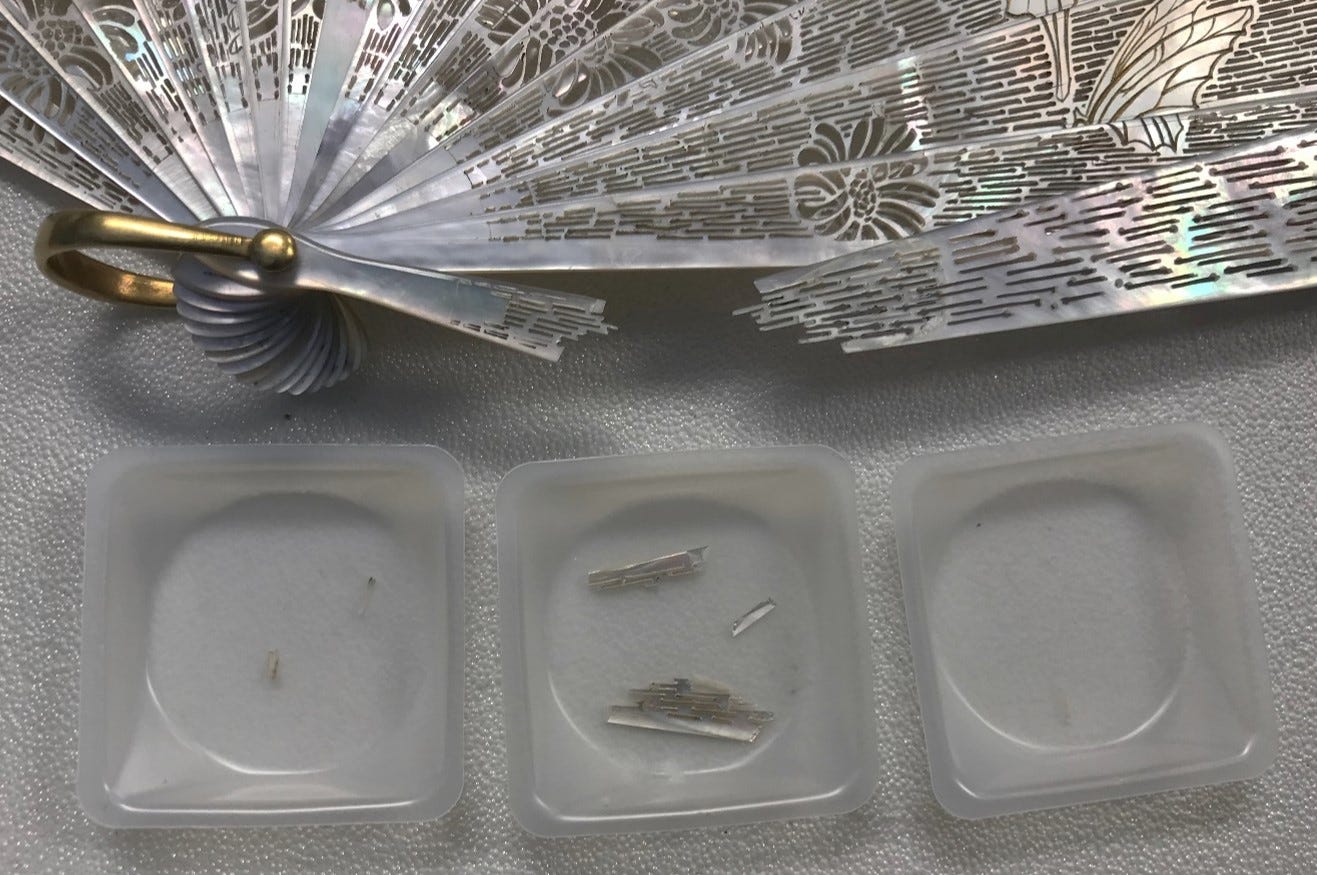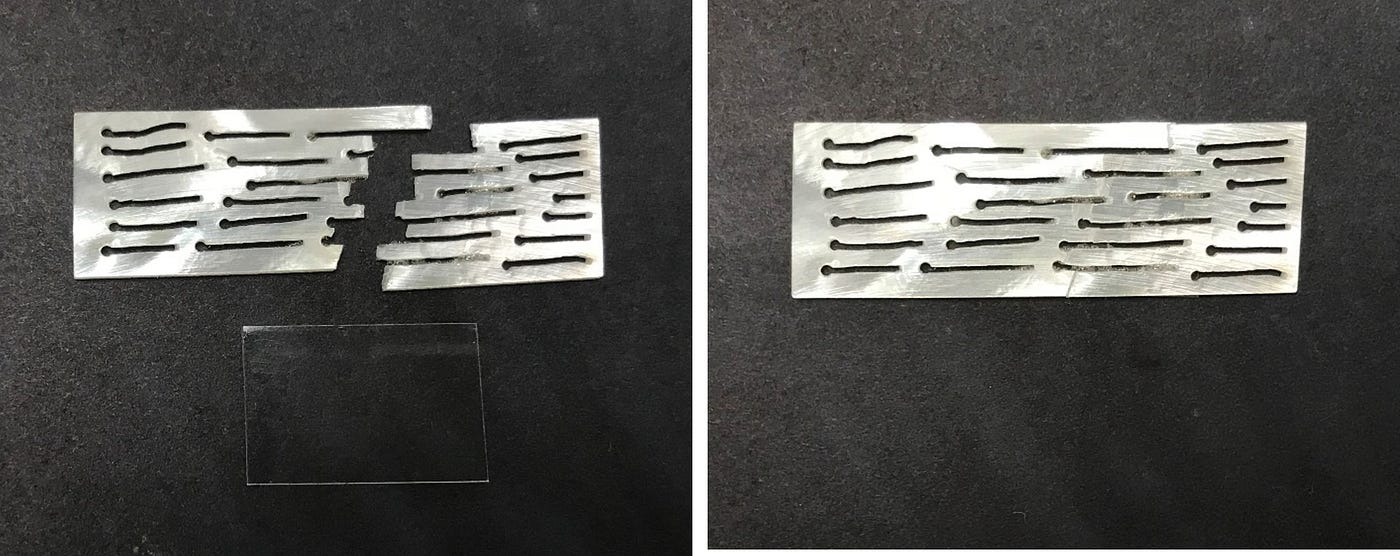[ad_1]
By Adrienne Gendron, Gradutate Intern in Objects Conservation at the CMA

Several elements embody luxurious far more fully than mother-of-pearl and gold. This mother-of-pearl supporter is composed of 19 slats with gold-colored inlay and cutout types featuring butterflies and bouquets (fig. 1). The lover was made by René Lalique, a French jeweler and glassmaker doing work at the peak of the Art Nouveau movement in the early 20th century. At that time, artists began to refocus on the great importance of the particular person artist’s hand after a interval of fascination with industrial procedures. The Art Nouveau movement released an appreciation for organic and natural forms, references to the organic planet, and an affinity for Japanese type. Simultaneously, there was an outpouring of artistic effort and hard work into the realm of attractive arts, ensuing in a abundant time period of creativity and ornamentation of day to day objects. Lalique was heralded as “the very best jeweler functioning in France” and was identified for employing materials animated by light-weight (Harrison 2008, 29).
The mother-of-pearl employed to create this Lalique enthusiast is very skinny (about the thickness of a quarter) and produced even much more delicate because of to the intricate cutout patterns. Many years back, a single of the slats broke into many pieces. Previous repair service tries made use of an adhesive, but with this sort of a little surface spot to be part of, the repairs were inherently weak and failed regularly. As aspect of my graduate internship with the museum’s objects conservation lab, I was questioned to come across a much better resolution to this complicated challenge.

To do this, it is vital to evaluate an item and ascertain the most proper cure. Soon after researching the object’s cultural context, I established that, as an Artwork Nouveau luxury decorative arts item, the fan’s attractive visual appearance is paramount to its core that means. The object is no longer visually coherent in its latest weakened condition, and fixing it would return a diploma of visible legibility to the item regular with Lalique’s creative custom. Its current affliction also renders the object unstable and vulnerable to even further harm, so fixing the space would minimize risk. With these factors in head, I determined to master as significantly as I could about the object and how it was created, in purchase to build an acceptable treatment method program.



Inspecting the admirer beneath a microscope uncovered interesting details. Whilst at very first glance the slats show up to be made in one particular piece, skillfully executed joins are noticeable less than magnification (fig. 3). The artist utilized at minimum two items of mother-of-pearl to generate each slat, employing a advanced splicing technique to make the joins as invisible as feasible. I could also see that the artist first mapped out the layouts in shallow incised strains (fig. 4). The slender slits ended up created applying a tiny drill to pierce holes, which were then elongated into slits with a jeweler’s saw.
The front of the fan is also adorned with incised strains, which are crammed with gold-colored substance . The incisions have angled sides, indicating that they ended up created making use of a pointed software. Under the microscope, the gold substance looks like numerous person particles as opposed to a one sheet of metallic, suggesting that it was used as a powder relatively than as a leaf (fig. 5).

At 1st look the gold-coloured substance and metal loop appeared to be pure gold nevertheless, factors are not always as they feel! I used portable X-ray fluorescence (pXRF), a non harmful analytical strategy that presents data on elemental composition, to come across out a
lot more. I found that the gold-colored product has brass, a copper and zinc alloy, together with some gold. My examination of the metallic loop suggested that it is probable composed of a copper alloy foundation metal that has been gold plated.

Future, I designed mock-ups to achieve a hands-on knowledge of how the lover was built. Using sample items of mother-of-pearl, I produced incised channels with a Dremel tool and tested 3 methods of implementing gold-coloured fill: flash gilding (gold powder utilized in excess of a binder), shell gold (gold particles suspended in a gum arabic medium and used as paint), and mordant gilding (gold leaf applied over a binder) (fig. 6). I observed that the flash gilding process gave an physical appearance most equivalent to the places on the Lalique enthusiast. This principle is additional supported by the presence of stray gold-colored particles in places of the lover not supposed for decoration, which could effortlessly come about when functioning with free powder (fig. 7).

The destruction to the fan’s outermost slat experienced resulted in a sophisticated crack with multiple individual parts. Simply because previous maintenance tries making use of adhesive by yourself had failed, I decided to test applying a backing materials to assist the harmed space from powering. I selected Mylar, a skinny polyester film, as it is transparent and would not disrupt the visible impact of the fragile cutouts but it is also robust and rigid more than enough to provide enough aid to the destroyed space. To test this process, I created an additional mock-up re-generating the fan’s cutout system, then broke the mockup in half and adhered the Mylar backing in location (fig. 8).

Soon after completing the mock-up, I was in a position to correctly repair the original supporter (fig. 9). The consequence is an item that is now visually coherent and reliable with the artist’s at first intended appearance (fig. 10). It is also additional structurally stable and can be securely shown in the foreseeable future.

Zoom in on this French supporter and many other individuals by seeking the search term “fan” in Assortment On the web. Which style catches your eye?
[ad_2]
Resource hyperlink



